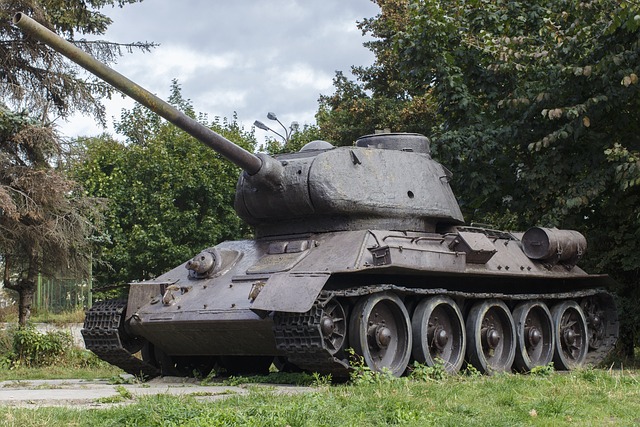Conflicts over their borders have existed for virtually as long as there have been Finns and Russians. So it came as no surprise that the Soviet Union, in the winter of 1939–1940, annexing territory at Finland's expense, took advantage of a complacent Nazi Germany. In exchange for help in Poland and the ceding of the western half of Poland to Germany, a secret clause in the German-Soviet Nonaggression Pact of August 1939 gave the Soviet Union free reign in the Baltic States and Finland. Two months after Poland's capitulation, the Soviets were getting ready to invade Finland.
On November 26, the Soviet administration fabricated an event to support their invasion. The Soviets began their attack on November 30 after three days of diplomatic dispute. The only explanation for their desire to declare war in the middle of winter seems to be their certainty that they could annihilate their rivals in less than two weeks.
The Soviets had every right to be confident in their assertion because the Soviet force was massively outnumbered by the Finnish army, which lacked heavy weapons, numerous planes and ammunition, discipline, training, and heavy weaponry. The only things working in the Finns' favor were the extreme cold, to which they were better accustomed than the Soviet troops, and the brilliance of Marshal Gustav Mannerheim, their 72-year-old commander.
From the Arctic seaport of Petsamo to the southern Karelian Isthmus, which held the Soviet-Finnish boundary just northwest of Leningrad, the Soviets assaulted Finland at five different sites. Just where the Finns were best equipped, behind the Mannerheim line of entrenchments, antitank ditches, and broad fields of fire, the Soviets launched their fiercest onslaught across the isthmus. Numerous Soviet attempts to cross the isthmus were repulsed by the Finns, who also massacred large numbers of Soviet soldiers in the process.
The illusion of an easy victory was false. Soviet Premier Joseph Stalin was enraged when the vast Soviet army was embarrassed by a little force. By retirement or execution, he ousted the main commanders, and Marshal Semyon Timoshenko was chosen to lead the operation. Timoshenko stopped the advance, gathered his forces, and immediately prepared his men for battle by training and punishing them. He pre- pared his forces in January 1940 and harassed the Finns on the Mannerheim line with short attacks and heavy artillery barrages. On February 1, he authorized a massive artillery bombardment that fired almost 300,000 shells into Finnish positions and dispatched Soviet planes to target reserve areas behind the Mannerheim line.
The withdrawal merely postponed what would eventually happen. Early in March, pockets of Finns battled valiantly as Soviet forces broke through everywhere along the isthmus. Any hope of ongoing Finnish resistance was destroyed when the Swedes refused to allow a force of 100,000 British and French soldiers to cross their borders. The Finnish government began talks on March 6. The 12 March pact cost the Finns 25,000 square miles of land, including the entire Karelian Isthmus and their access to the Arctic Ocean, or one-tenth of their territory. In addition, Finland suffered a loss of around 25,000 lives and over 43,000 injuries; estimates of Soviet casualties range from 200,000 to one million.
The opportunity to exact revenge was soon to arrive. The Finns saw an opportunity to reclaim their lost area when the Nazis invaded the Soviet Union in June 1941. Despite the fact that the Finns never formed an alliance with Germany and only infrequently engaged in direct cooperation with them, they took advantage of the Soviet withdrawal to retake their lost land. When Germany was defeated in 1945, a larger and better-equipped Soviet military arrived at Finland's borders, ending the "Continuation War." Once more, the Finns were forced to give up their claims to the Karelian Isthmus and the northern bank of Lake Ladoga.
The Finnish resistance gave the world a heroic tale of an underdog battling against insurmountable odds, but it also revealed the Soviet military's false sense of power. Adolf Hitler believed that Nazi Germany could easily defeat the Soviet Union if a small, unprepared nation like Finland could inflict the Soviets a devastating beating. Hitler attacked the Soviet Union with the same overconfidence that the Soviets had shown in November 1939, and the Germans paid a similar price due to the tenacity of a deterritorialized populace and the ravages of the Russian winter.

References:
Erfurth, Waldemar, Warfare in the Far
North (Washington, DC: Center for Military
History, 1987); Lundin, Charles, Finland in the
Second World War (Bloomington: Indiana
University Press, 1957); Wuorinen, John, ed.,
Finland and World War II, 1939–1944 (Westport,
CT Greenwood Press, 1983).
Posted using Proof of Brain

One day it will be useless to invade. The weapons will be so powerful that any enemies will be decimated almost entirely.
Yeah exactly!
Congratulations @cryptodonator! You have completed the following achievement on the Hive blockchain And have been rewarded with New badge(s)
Your next target is to reach 90 posts.
You can view your badges on your board and compare yourself to others in the Ranking
If you no longer want to receive notifications, reply to this comment with the word
STOPTo support your work, I also upvoted your post!
Check out our last posts:
Support the HiveBuzz project. Vote for our proposal!